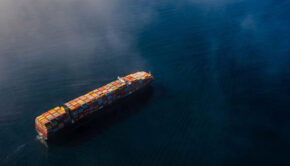Increasing safety with technology
Published on April 25th, 2022
As big boats increase in speed, so do the safety hazards. If a crew falls overboard, recovery decreases, particularly if they are attached by a tether. But also obstacles become less avoidable as the time to react is minimized.
When BMW Oracle Racing launched their 90-foot trimaran for the 2010 America’s Cup, it would trail an escort boat that was responsible for detecting debris. The team wanted no setbacks in their quest to claim the cup.
Offshore races magnify the issues with fewer crew, particularly as solo racers fail to maintain a permanent watch. Even with the best effort, collisions with unidentified floating objects (UFO) are common, and when something hard is getting hit by something fast, disaster can follow.
Helping to avert disaster is the OSCAR system, an innovative tool in the quest for detecting UFOs. Using thermal imaging cameras together with artificial intelligence capable of pinpointing, analyzing, and alerting its crew to any potential surface danger and avoiding it, this technology is gaining traction.
With 360° vision, it is designed to detect danger with more enhanced vision than a human eye and is able to send instantaneous automatic alerts to the various on-board screens (multifunction screen, tablet, smartphone and/or computer).
Since the launch of the system in 2018, OSCAR was trailed in the 2020-21 Vendée Globe to collect data in extreme conditions. Every OSCAR detection system around the globe now feeds the company’s databases to ensure the continuous optimization of the analysis and pertinence of this microcosm of technology.
While marine radar and AIS have made boating safer, radar data can require expert skill for interpretation while smaller objects, such as unsignalled craft, buoys, or floating obstacles will typically not be detected by radar or AIS. Existing tools also do not provide sufficient support for MOB situations.
Based on the ability to detect temperature differences of 0.09° F, based on the experience of millions of recognized marine objects, and based on more than 300,000 nautical miles traveled at sea, OSCAR can detect and recognize objects before they become a hazard. OSCAR can also support MOB recovery by detecting, recognizing and tracking swimmers in the water.
While technology often replaces human skill, effectively dumbing down sailors, OSCAR may prove to be a necessary support tool to avert the dangers of offshore boating.









 We’ll keep your information safe.
We’ll keep your information safe.